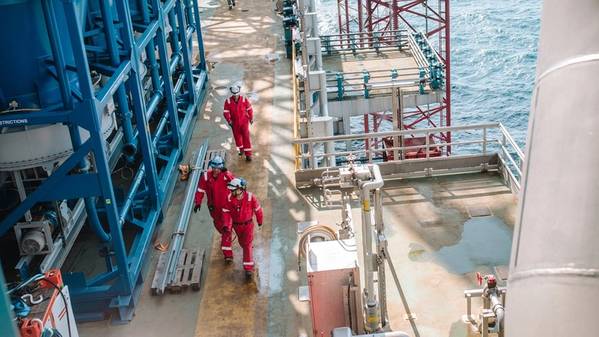
Norwegian oil company Equinor said Monday that its safety statistics for the first quarter of 2021 indicated fewer serious incidents and personal injuries in Equinor compared to the same period last year, but said the number of incidents was still "too high."
Ten serious incidents were recorded in the first quarter of this year, compared to 21 serious incidents in the same period in 2020.
The twelve-month average serious incident frequency, SIF (number of serious incidents per million hours worked), is per March 0.5, equivalent to the level we saw at the end of 2020, Equinor said. SIF includes both incidents with an actual serious consequence (injury) and incidents with serious potential.
The twelve-month average total recordable incident frequency, TRIF (number of personal injuries per million hours worked) is 2.3, the same as at the end of 2020. A total of 66 injuries have been recorded in the period, compared to 78 in the first quarter of 2020.
Equinor's chief operating officer (COO) Jannicke Nilsson said: “We are working on further improving our safety performance by daily improvement efforts and targeted projects. An important part of this work is increased transparency of our safety performance. By sharing results and experience widely across the industry, we want to help enhance awareness of how we jointly can work even harder to reduce risk and avoid incidents and injuries, both among our own employees and those of our suppliers."
Two gas leaks
During the first three months of 2020 two gas leaks have been recorded, one at the Visund field in the North Sea and one hydrogen leak at the Mongstad refinery. Six leaks were reported for the same period last year. No serious well incidents have been reported in the first quarter of 2021.
"The number of incidents is still too high, and we see the need for enhancing our understanding of risk. At the same time, we must prove that we learn from previous incidents by avoiding new ones. Only then we can succeed in taking our safety effort to a higher level,” says Nilsson.
Nilsson said that one of the strongest premises for good and continuous improvement of our safety work builds on the tripartite cooperation between the authorities, employee representatives, and the company.
“In some connections there will be different views on what measures to choose to reach our common goals. Close dialogue with regulatory authorities and employee representatives is crucial to us in our safety work. Our common goal is to enhance the safety culture and make sure that everyone comes home safe.
"We do this through our work on the “I am safety” roadmap. By charter cooperation and the alwayssafe.no internet platform we have introduced a common initiative across the industry to enhance the safety culture and work together to reach the goal of no major accidents and no injuries or undesirable incidents in our daily work,” Nilsson said.